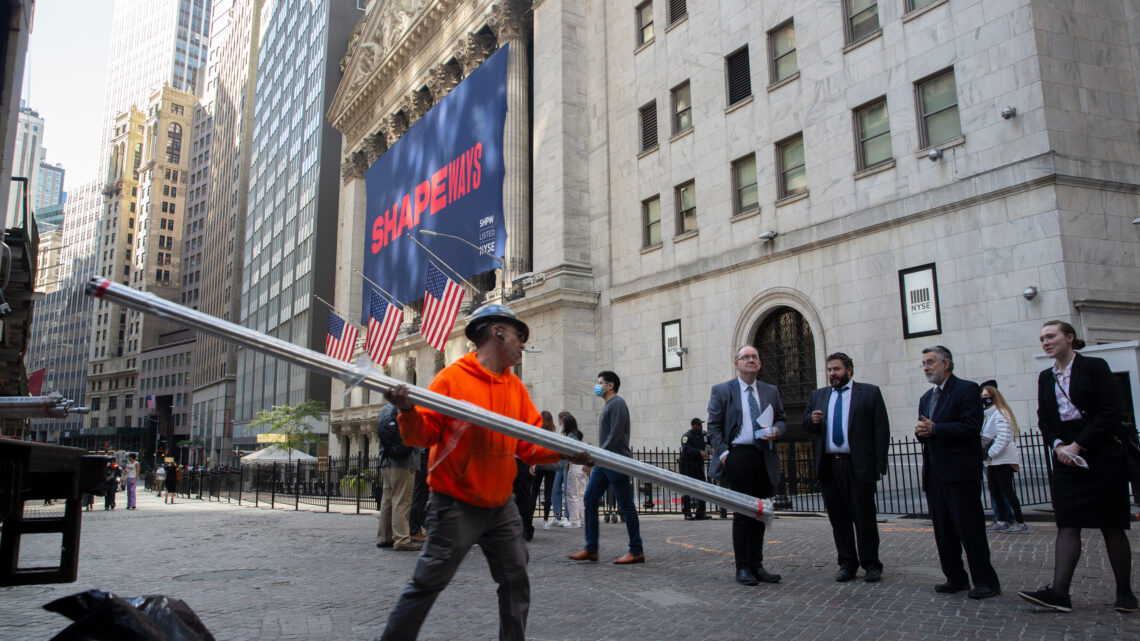
Wall Street Booms Even Amid Concerns That Jobs May Go Bust in New York
October 22, 2021Wall Street profits are soaring — likely to reach a record $60 billion this year, marking a 20% surge. The taxes paid by the firms, as well as their traders, investment bankers and other staff, contributed a record $4.7 billion to city coffers in pandemic-slammed 2020 with even more expected this year.
But the securities industry’s place as the city’s cash cow, with average salaries surpassing $400,000, is endangered by an accelerating exodus of jobs to places with lower taxes and cheaper operating costs.
This year, the city will lose almost 5,000 Wall Street jobs at a time when the rest of the nation will add 23,000 securities positions, according to the annual comprehensive report on the industry released Thursday by state Comptroller Tom DiNapoli.
Combined with a decline of 3,200 jobs last year, the city’s share of securities industry employment will fall to 17.8%, the lowest level in three decades.
The state Legislature in April raised taxes on millionaires, citing the need for high earners benefitting from Wall Street’s boom to help deliver New York from the pandemic recession. But Kathy Wylde, CEO of the Partnership for New York City, slammed the move as “cavalier,” saying it marked “the last straw” for some companies.
“They are relocating jobs to other states that know how to compete for business and talent,” added Wylde, whose group represents many of the industry’s biggest financial firms.
Growing signs that a significant chunk of Wall Street will leave New York City comes as the local recovery continues to falter.
The city failed to add jobs from July through September and remains 525,000 positions below the record of early 2020, figures released Thursday by the state Department of Labor show.
And despite an increase in tourism and vaccination rates, the city’s hard-hit leisure and hospitality industry saw scant job growth over the last three months.
The unemployed rate declined to 9.8%, primarily due to people dropping out of the labor force. The local number is more than double the national rate of 4.8%.
Danger Signs Ahead
Last week, the New York Building Congress released a report finding that despite a rebound in construction activity, total spending this year will drop 10% this year from 2019 when adjusted for inflation. Employment will be at its lowest level since 2014.
In addition, the move to remote work means that retail sales could fall by as much as $1.6 billion annually, with the damage concentrated in Manhattan’s key business districts, according to an analysis from city Comptroller Scott Stringer.
While pandemic shutdown initially caused stocks to plunge, Wall Street is flourishing, largely thanks to low interest rates, the infusion of federal relief funds and the ease of remote work.
Since the end of March 2020, the benchmark S&P 500 has risen 67%. The Nasdaq Composite Index, often used as a barometer of tech stocks, has soared 90%.
The rising market has unleashed a flood of initial public offerings of firms selling stock for the first time, an especially lucrative business for securities outfits.
More than 800 companies have gone public so far this year, almost double the number for all of last year, according to stockanalysis.com. New York tech companies have been significant in the surge as companies like the glasses retailer Warby Parker raise big sums in IPOs.
Mergers and acquisitions, another very profitable area for Wall Street, are also booming with the possibility that global activity will reach the record $6 trillion set in 2007, according to DiNapoli’s report.
Also boosting profitability has been the Federal Reserve’s decision to cut interest rates to near zero. Since Wall Street firms borrow billions of dollars, lower interest rates cut costs substantially.
In the first six months of the year, Wall Street profits reached $31 billion, putting it on target to match the 2009 record of $60 billion, which was another period of near zero interest rates, following the stock market crash the previous year.
“The size of the profits is significant and probably higher than we would have anticipated,” said DiNapoli.
Jobs Go South
The taxes paid by the companies and their traders, investment bankers and other staff were a key reason city and state budgets weathered the pandemic.
The industry accounted for a record $4.7 billion in revenue to the city, or 7% of all taxes collected, for its fiscal year that ended June 30 — and a big increase in that number is possible in the current year.
The state is even more dependent on Wall Street because it relies on the personal income tax, with 18% of all revenue coming from the industry and its employees.
State revenues in the first half exceeded initial projections by $5.2 billion, DiNapoli reported last week, in large measure because of Wall Street and the increased income taxes on wealthy New Yorkers.
But the comptroller’s report shows that despite the profitability, jobs are being relocated elsewhere. By the end of the year, New York will have lost about 9,000 securities jobs, bringing the total down to 175,000.
Meanwhile the industry is expanding elsewhere, the DiNapoli report notes.
Over the last three years, Florida, Texas and North Carolina have accounted for almost half of the gains in securities jobs. Florida and Texas have no income tax, and North Carolina has emerged as a rival to New York with a cluster of big financial firms led by Bank of America.
“Some of Texas and Florida may be at our expense,” said Di Napoli, “although the experience of working remotely and increased efficiency may be factors as well.”
‘Sky Hasn’t Fallen’
The average salary on Wall Street bounced up to $438,000, or almost five times the average of the rest of the private sector.
DiNapoli noted that last year’s income tax increase pushed the top rate for well off New York City residents to 13%, topping California for the first time in years. Limitations on state and local tax (SALT) deductions make wealthy New Yorkers more sensitive to their tax burden
“We need to be careful about our competitive position,” said Andrew Rein, president of the Citizens Budget Commission. “We have made some fiscal choices that cause economic risk. We increased the income rate to be the highest in the country, we still have SALT, and these affect high-income residents and their location decisions.”
Neither Mayor Bill de Blasio or mayoral frontrunner Eric Adams returned a request for comment on the loss of Wall Street jobs. Adams has said her intends to be pro-business, unlike what he calls the anti-business attitude of the de Blasio administration.
Not everyone believes the declines are alarming.
New School economist James Parrott notes the city never regained the jobs it lost in the cyclical downturns of 2001 and 2008, yet New York managed to diversify its economy. The 2014-2019 period, he observed, saw the greatest gains for low- and middle-income residents since the 1960s.
“Haven’t we been living this for the past 20 years?” he asked. “The sky hasn’t fallen, and I don’t think it will.”
In September, the city added jobs in private colleges and universities, and day care, as schools reopened, according Parrott. The performing arts, led by the gradual reopening of Broadway, also helped get some New Yorkers back to work.
But those gains were offset by Wall Street and motion picture job declines as well as weakness in some other professional and business services.
Parrott added that it is now likely the city will fall short this year of the 450,000 job gains expected in the mayor’s bullish economic forecast.
This article was originally posted on Wall Street Booms Even Amid Concerns That Jobs May Go Bust in New York


